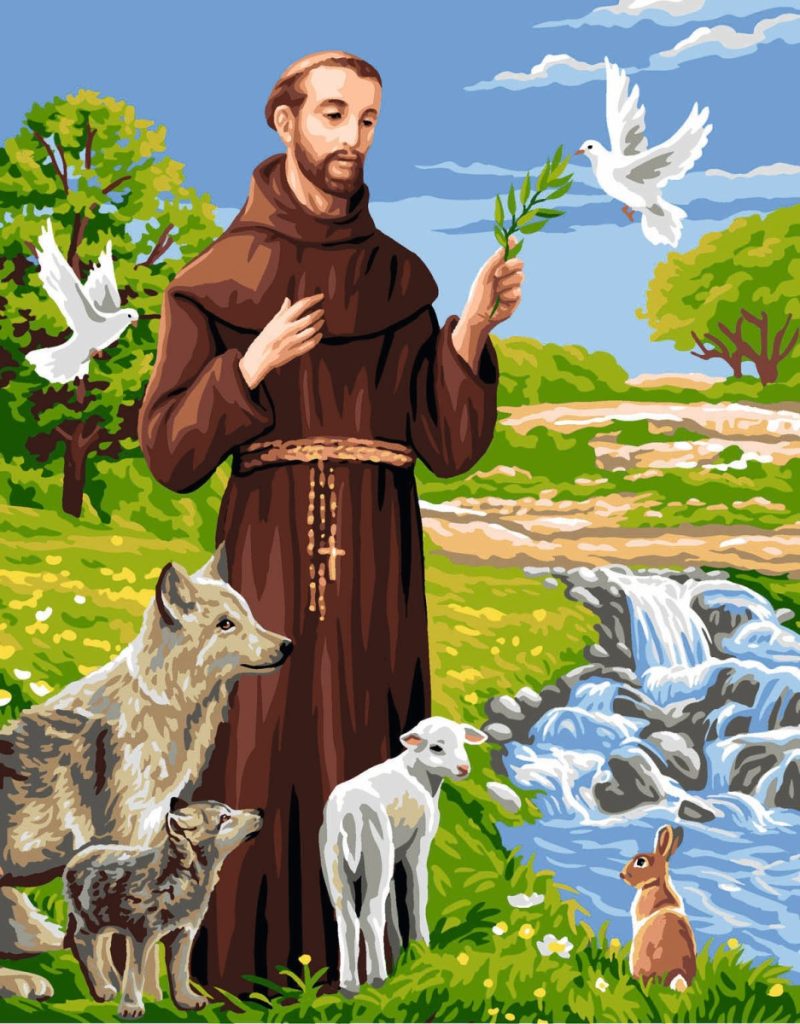
St Francis of Assisi is Nursery’s class saint. Have you ever wished you could talk to the animals? It is believed that St. Francis could. One day there was a large flock of birds that St. Francis preached to, telling them they should be thankful. The birds stood still and listened as he walked among them. They only flew off when St. Francis told them to fly away. Another story about St. Francis talking to an animal involved a wolf. This wolf had killed many people in a town due to hunger. The townspeople were going to hunt it down and kill the wolf. Instead, St. Francis went out and talked to the wolf, telling him to no longer kill anyone. The wolf obeyed and even became the town pet. The townspeople always fed the wolf from then on too.
Feast day: 4 October
St. Francis of Assisi, pray for us!

St Bernadette is Reception’s class saint. St. Bernadette is one of the most popular female catholic saints there is. They said that when St. Bernadette was 15, she had her first vision of the Blessed Virgin — one of 18 she would have in her short life. According to Bernadette, the Virgin Mother asked her to pray for sinners and to have a chapel erected in honor of Mary. The area around the chapel has been a site for miraculous healing ever since. Her young age when she had her first vision, and her incredible gifts make her a popular Saint with children.
Feast Day: 16 April
St Bernadette, pray for us!
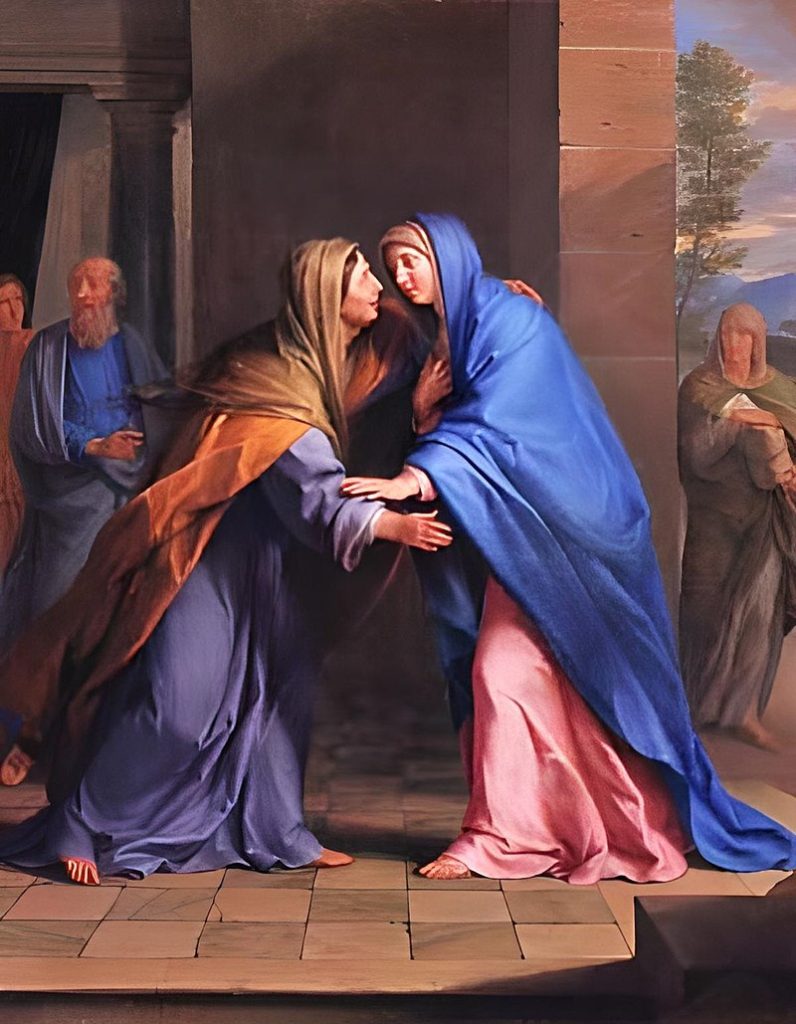
St Elizabeth is Year 1’s class saint. Elizabeth was a cousin to the Virgin Mary. Her husband, Zechariah, wanted a child, so he went to pray in the temple and was told by the angel Gabriel, “Do not be afraid, Zechariah; your prayer has been heard. Your wife Elizabeth will bear you a son, and you are to call him John. He will be a joy and delight to you, and many will rejoice because of his birth, for he will be great in the sight of the Lord. He is never to take wine or other fermented drink, and he will be filled with the Holy Spirit even before he is born.” (Luke 1:13-15). Zechariah did not believe the angel because both himself and his wife were elderly so Zechariah was made mute until the prophecy had been fulfilled. Elizabeth became pregnant shortly after.
Feast Day: 5 November
St Elizabeth, pray for us!
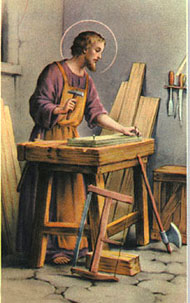
St Joseph the Worker is Year 2’s class saint. He played a really important role as father and protector of the Holy Family. In addition to this, he represents hard work (he was a carpenter) in everything he does. St. Joseph showed willingness to do whatever God asked, and vowed strong commitment to his family. He is a saint that has all wonderful values for children.
Feast Day: 1 May
St. Joseph the Worker, pray for us!

St George, Patron Saint of England is Year 3’s class saint. St. George was raised a Christian and always wanted to be a soldier. When he was old enough, he joined the army. The man in charge of the army, Diocletian, hated Christians and had many put to death—including St. Philomena. The fact that George was a Christian AND a soldier didn’t bother Diocletian, especially since George was a good one. Eventually, though, Diocletian decided that EVERYONE in his army must worship him and the Roman gods instead. George refused. The army officials begged him to deny the one, true God. But George refused. George gave all his money away to the poor before he was cruelly tortured and then beheaded on April 23, 303. Legend has it that Saint George slew a dragon. It is said that in order to get water from a lake, the people of the city had to give sacrifices to the dragon that lived there. At first the dragon was satisfied with sheep but then it began to demand more so the people began to sacrifice young girls. Each day, they would draw lots to see which girl would be fed to the dragon. One day, the king’s daughter’s name was drawn. As the princess was led away, St. George rode by the lake and saw what was happening. George made the sign of the cross and slew the dragon, saving the princess’s life. The citizens were so grateful to George that they all converted to Christianity.
Feast Day: 23 April
St. George, pray for us!
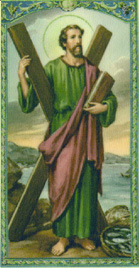
St Andrew, Patron Saint of Scotland is Year 4’s class saint. Andrew and his brother were fishermen. They were called from their fishing by Jesus, who promised to make them fishers of men. In the Gospel of John, Andrew is the first apostle named and was also a disciple of Saint John the Baptist before Jesus’ call. Andrew was reportedly killed by crucifixion. The cross was later described as X-shaped. The X-shaped cross is depicted on the Scottish flag. In Scotland one story says that Saint Rule brought some relics, or bones, of Saint Andrew from Pátrai to Scotland to keep them safe. He built a church at what is now Saint Andrews to protect the relics. Later, in the 1100s, Saint Andrews Cathedral was built there as well. It was the largest building in Scotland for hundreds of years. Pilgrims traveled there from all over. Saint Andrew therefore became the patron saint of Scotland.
Feast Day: 30 November
St Andrew, pray for us!

St Patrick, Patron Saint of Ireland is Year 5’s class saint. There are those who love crawly things like snakes, and those who don’t! But either way, children love the story of St. Patrick leading the snakes out of Ireland. The deeper meaning of the story may elude small children… but the magical tale makes him one of the most recognised Saints among children and adults alike.
Feast Day: 17 March
St. Patrick, pray for us!
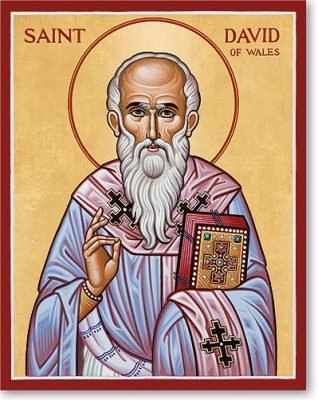
St David, Patron Saint of Wales is Year 6’s class saint. David (or Dewi in Welsh) was born about 520 near St. Bride’s Bay, Pembrokeshire, Wales. There is very little known about his life. Most of what is believed about his life comes from a biography written in about 1090 by Rhygyfarch, a Welsh scholar. According to Rhygyfarch, David was the son of a leader named Sant and Non, a woman who later was named a saint. David became a Christian priest. He then lived on an island for many years to study the Bible. Once he left the island, David founded a monastery, or at Mynyw (Menevia) in southwestern Wales. Life at David’s monastery was very strict. The monks who lived there had to work very hard. They were rarely allowed to speak. They ate only bread with vegetables and salt. They drank only water. David founded many churches throughout southern Wales. He later moved the center of the church government from Caerleon to Mynyw. David died in about 600 in Mynyw.
Feast Day: 1 March
St. David, pray for us!
